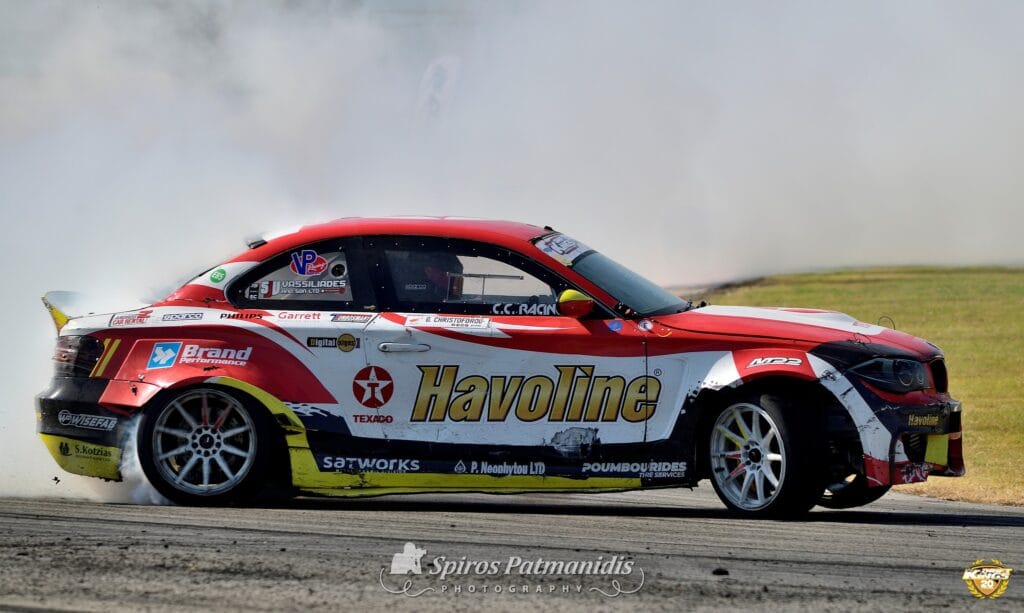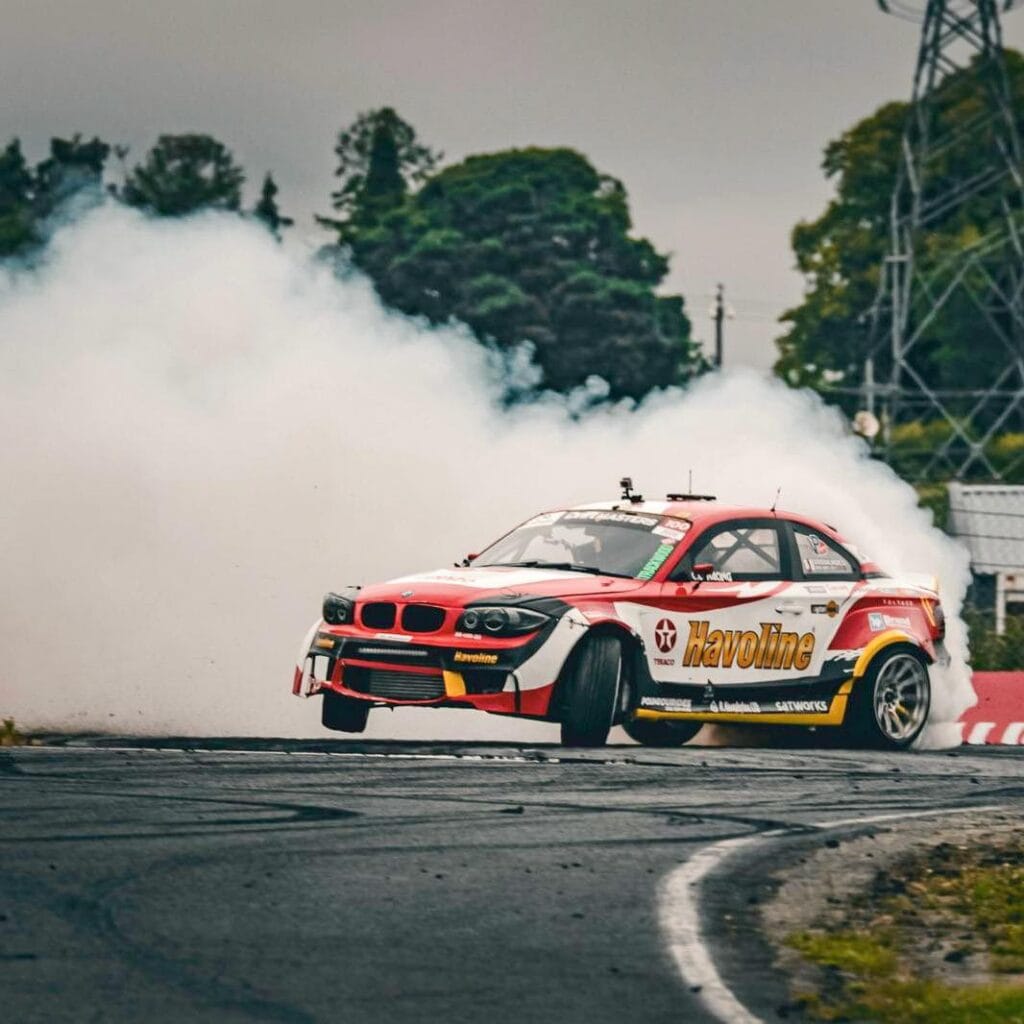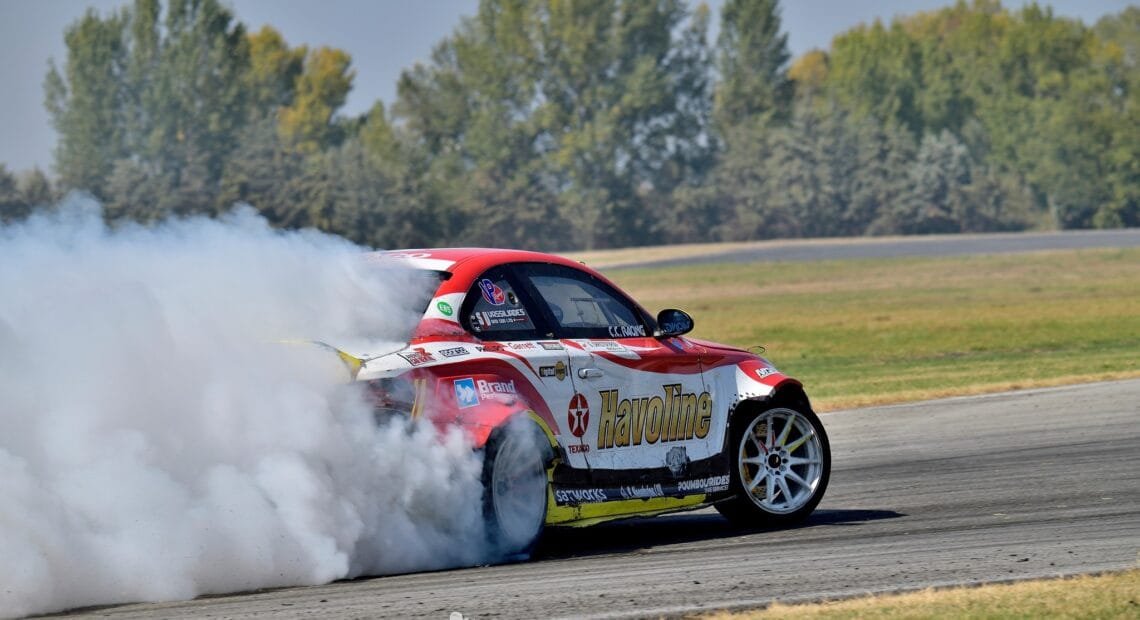This year, 2023 Drift Kings champion, George Christoforou, also known as Ela Koko, joined the Drift Masters grid. Drifting.today team prepared an interview with Cypriot, so grab a drink and enjoy!
First of all, as we are talking to a 7 times Cypriot national drift champion, give us a little bit of insight into Cypriot drifting for those who are not familiar with the scene. Being a relatively isolated island from mainland Europe, things must work quite differently here.
First of all, I want to thank you for your interest in my drifting career, and I’m really happy to answer all of your questions.
Yes, the Cyprus Drift scene started relatively early! There is a passion for motorsport on the island and they grow very competitively here. One of the benefits was that we had early influence from Team Orange Japan, which conducted extensive training in Cyprus. However, one of the downsides was that, as an island, Cypriots lack opportunities to compete in Europe and travel for various competitions.
After introducing life on an island as a pro competitor, tell us about your 7 Cypriot national titles. Do you have a favourite one? Which year / Cypriot championship was the most challenging, and which year was the most fantastic contest for the title fight?
Well, the one that’s more memorable for me was my very first championship that I won, mostly because I was a serious underdog and I had to fight for the top position back in 2012. My last championship back in 2021 was one of the closest regarding points, and it all came down to the final race where I took the championship.
Connecting to the first two questions, tell us more about the logistics for an international season from the island of Cyprus. What are well-known or unknown challenges to take on during the season?
International drifting coming from Cyprus is very difficult because there are no ferry boats that will take you directly to Europe, and the cost is very high. So you already have a lot of spending just to be able to get to Europe, and then of course to come back. Other logistical problems are storage and travelling.
You need to have a base outside of your own shop, and in Europe, the travelling distances are long, and you have to do them by yourself, drive for many hours and compete when you get there. All these are challenges that you need to face when driving internationally, and of course, the race car doesn’t get to come back to our shop for repairs, so you need to find solutions on the road.
You have had many international drift races even before completing full European drift seasons, but how did the adaptation go from domestic racing to international racing? Suddenly, you met many new circuits, many new drivers with different styles and new impulses. How much time does a drifter need to adapt to international drifting?
It’s definitely a difficult task because you have to get used to these new circuits, drivers, styles, and conditions very fast. But I think one of my benefits is that I built the car. I’m the mechanic. I know everything about it, and I can easily adapt to different setups so that I can get an optimal performance in the race. Also, you need a great team that is willing to follow your dreams and goals and help you achieve them in these races.
Which circuit or layout did you encounter the most challenges and surprises throughout your drifting career? Do you have a favourite racetrack in mainland Europe?
One track that comes to mind that is very technical is, of course, RabócsiRing in Hungary. It looks like a very small track, but the elevation changes and the walls make it very challenging. It’s one of my favourite tracks, along with Bikernieki in Latvia and Sosnova in the Czech Republic, because once you get the hang of the track and complete the lap, it is very rewarding.

What does it mean to you to be the only Cypriot drifter to win an international title at Drift Kings in 2023? Do you think your career pattern can serve as a role model for more Cypriot drifters?
Yes, for sure it was one of the highlights of my career so far, and I hope it’s motivation for the next generation of Cypriot drifters to follow.
Could you tell us more about drifting at your home circuit, Achna Speedway? As far as I know, Sleepy was involved in the design of Achna Speedway.
Achna Speedway has a special place in my heart because it’s where I started my Drift career, and we were very lucky to have the influence of Mr. sleepy Hiroki Furuse from Japan as a judge and also a mentor. It is a technical track built with the drifter in mind for low-horsepower cars as well as high-horsepower cars. It has great facilities and can host big, crazy events.
During the summer, in Cyprus, temperatures can reach 45-50 °C. How do you and your machines cope with such extreme weather? Does it require some adaptation (as a driver) when you are drifting at locations with cooler weather?
Yes, Cyprus can get very hot and I think this is a benefit that we have already learned how to perform in these types of conditions we have built our cars to withstand the heat and when we go to locations with a cooler weather, it is kind of easier for us to perform on the other hand. Rain is a rare phenomenon in Cyprus, and we don’t get to practice that much in the rain.

As you have just finished the previous round of Drift Masters in Ireland, known for its unpredictable weather conditions, we have a very relevant question for you: What is the most efficient way to practice wet drifting in a country where rainy drifting is quite rare? Do you personally like drifting under wet circumstances?
Yes, in Ireland, the wet circumstances were challenging, but I don’t mind drifting in the rain as long as I get to practice the layout first and as long as the track doesn’t have different types of surfaces like in Finland.
You have chosen a one-series BMW chassis as your Pro Drifting Car. Have you considered or tested Japanese chassis as well, like Nissan Silvias or Toyotas? If yes, what was the factor that made you decide to pick the BMW?
As you know, I am a fan of BMW. It’s the chassis that I grew up learning, I have, of course, drifted Japanese chassis Silvia Rx7, etc., but there’s something about the BMW that I prefer.
Why has the S50B30 been chosen over other engines that are said to be more durable, and what is the difference between the S50 and the other engines? Why not 2JZ or LS?
The S50B30 engine, for me, is one of the best and most reliable engines. It’s an engine that I am very familiar with and can make the amount of horsepower that I need for these types of competitions easily. I much prefer a turbo engine rather than a naturally aspirated one because I believe a naturally aspirated engine makes for a lazy driver. The struggle of drifting with a turbo engine without falling off Boost and maintaining RPM helps you become a better drifter.
If you could improve one component/area of your BMW, what would it be (engine, chassis, body, etc)?
One thing that I am lacking with my car is the weight. It is a little bit on the heavy side, something that other Japanese chassis have an edge on because you can make them really lightweight, but it’s something that I will be focusing on for next year.
So far, you have participated in 4 Drift Masters events during your career. Could you compare this championship to other events and series you have taken part in (in terms of tracks, audience, and drivers)? Why did you choose to compete in Drift Masters this season?
I believe that competing in Drift masters was the next natural step to take in my career. It is the most difficult championship with very talented champion drivers from their respective countries. The tracks are amazing, a lot of spectators and huge exposure to a larger audience. For me, Drift Masters is a completely different championship than the rest that I drive, and this year is a learning process for us, and I am sure that in the future I will be fighting for the championship as well.
As far as I know, you are an expert on your own machine and engine. I would like to ask your opinion if it has more advantages or disadvantages as a driver to be a mechanic of your own car, or just focus exclusively on driving while the team takes care of everything else?
As I mentioned, I am the builder of my car, and this has advantages and disadvantages. One of the advantages is that as I drive the car I can figure out a new noise or a new feeling that shouldn’t happen and in most cases, I will fix it before it breaks, but the disadvantages is that I have to get under the car and fix it myself something that is super difficult to do in the races, but slowly slowly I have built a team that I am 100% they will make any job as perfect as possible.
Who are your main sponsors, whom you would like to say thanks to, and in what way are they helping your racing programme?
Ending this interview, I want to thank you first of all for giving me the opportunity to share with you all of my experience and, of course, my team and family that support me through the good and the bad races!! Also, a big thank you to my sponsors and especially my main sponsor, Texaco Motor Oil, for believing in me because without them, I couldn’t have done and achieved all of this, the last 15 years of drifting!
More drift events: https://drifting.today/events/ Check your Facebook and Instagram!





